Polenta cake, a classic Italian sweet dish, will entice you with its rich and tender texture. This rustic cake originates from Rome and is made with fine cornmeal and Roman ricotta cheese, mixed with raisins, and topped with pine nuts. Perfect for a sweet Italian breakfast or for an afternoon snack.
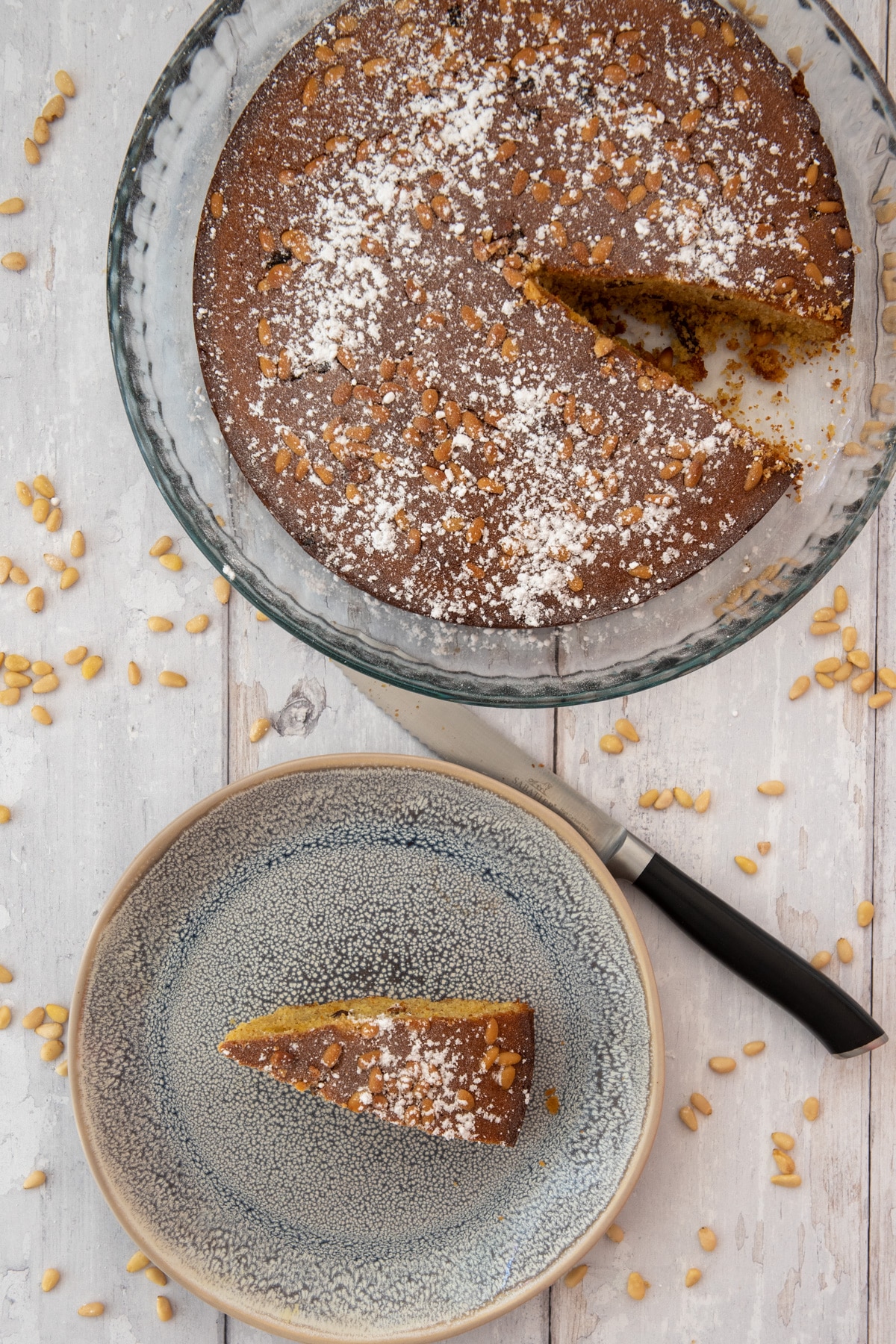
This Italian sweet cake is a versatile and delicious dessert made from a combination of simple and readily available ingredients.
The base of the cake primarily consists of polenta (a staple ingredient in Italian cuisine), giving the cake its unique texture and adding a delightful, grainy taste.
The foundation of this polenta cake recipe includes ricotta, eggs, butter, raisins and pine nuts.
This moist and tender cake offers various adaptations, making it an ideal choice for any occasion.
You'll appreciate the myriad ways of assembling this delightful dish as you follow this polenta cake recipe with its simple instructions.
For more of my favorite recipes for Italian breakfast cakes, you can check out: ricotta cake, marble bundt cake, orange loaf cake, jam crostata, and brioche.
You can also read the article: 21 traditional Italian Breakfast
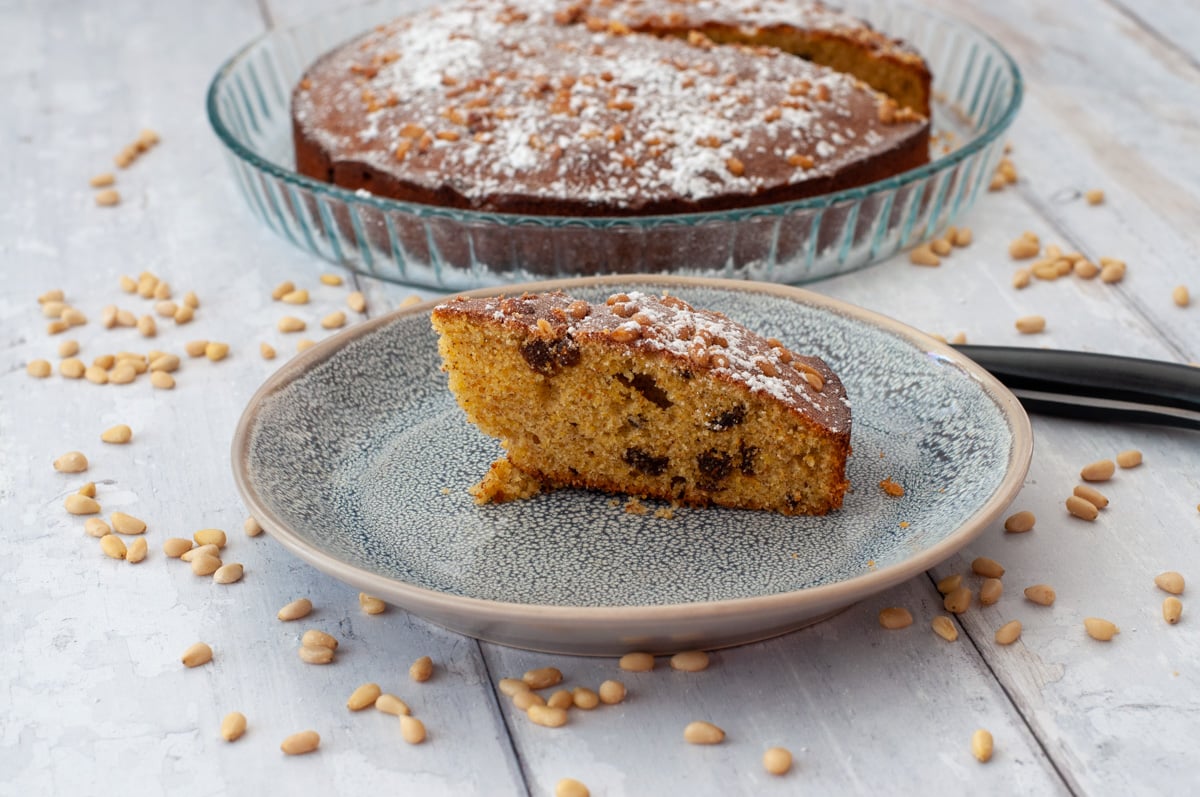
Ingredients
When cooking polenta cakes, the type of polenta used can affect the texture and flavor of the final dish.
In this recipe, we use a combination of Polenta Gialla Bramata (yellow cornmeal) and all-purpose flour to create a more cake-like texture.
The addition of flour can help bind the ingredients and create a softer, lighter polenta cake.
Be cautious when using all-purpose flour, as adding too much can make the cake dense or dry.
The rest of the ingredients
- Sugar is added to provide a natural sweetness to the dessert. You can use granulated sugar, brown sugar, or even confectioners' sugar, depending on your preference.
- Butter is used in many polenta cake recipes to add richness and moistness to the cake. Some prefer to use unsalted butter to maintain control over the salt content of the dessert. However, some recipes may call for olive oil as a replacement for butter.
- To bind the ingredients together, large eggs are incorporated into the mixture. The number of eggs may vary depending on the texture and consistency desired for the polenta cake.
- This recipe also includes ricotta cheese, which enhances the flavor and contributes to the moistness of the cake.
- Baking powder is used in polenta cake recipes to help the dessert rise while baking. Make sure to use the correct amount of baking powder to ensure a light and fluffy final product.
- For added crunch and flavor, this recipe includes pine nuts and raisins. These nuts complement the taste of cornmeal and can be sprinkled on top of the cake before baking for a decorative and rustic appearance. Raisins can be substituted with chocolate chips or lemon and orange zest.
Check the recipe card for measurements
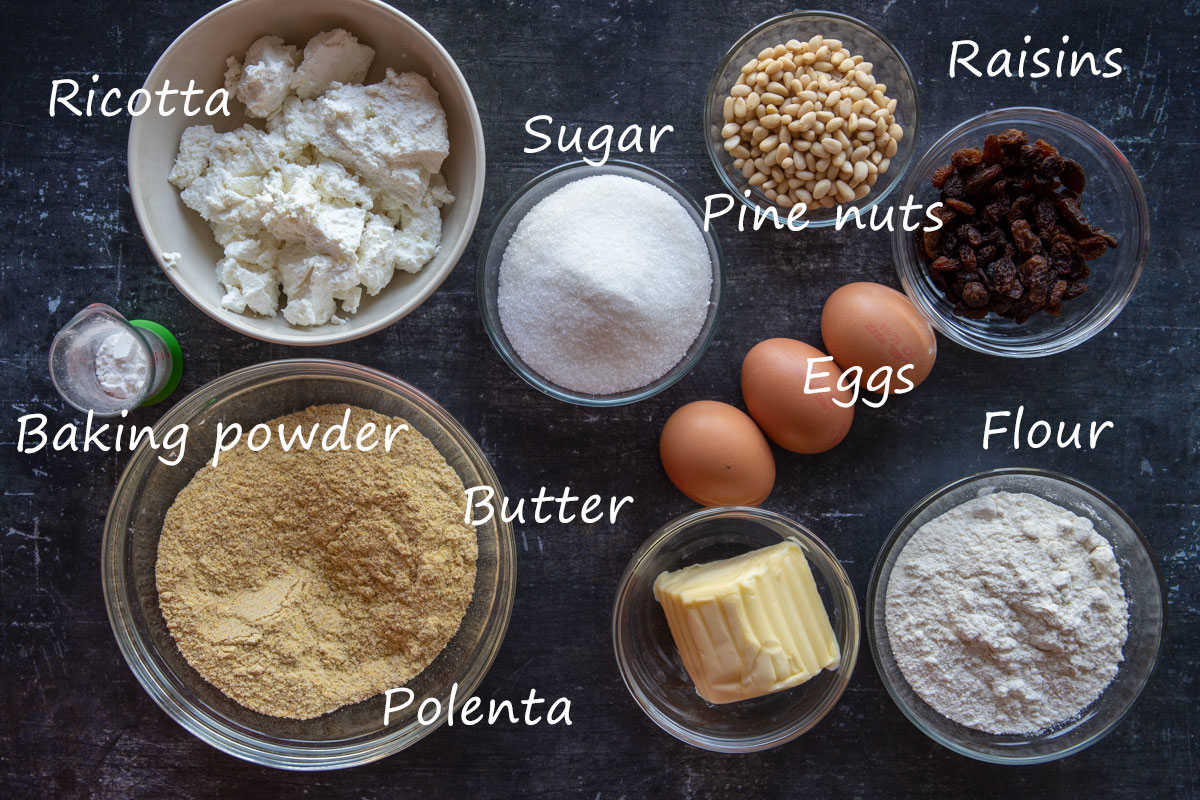
Baking Equipment
When baking a polenta cake, having the right equipment on hand can greatly impact the final result.
- An electric mixer is valuable when whipping up the batter for a polenta cake. Mixing the ingredients until creamy and light can be time-consuming when done by hand, so employing an electric mixer can save time and effort.
- A cake pan is essential for achieving the desired shape and size of the polenta cake. Typically, a 9-inch round cake pan works well for this type of recipe. If you're looking for a more decorative presentation, consider using a bundt pan.
- Regardless of the choice, make sure the pan is properly greased and lined with parchment paper to prevent sticking.
- Finally, a springform cake tin is an alternative option for baking a polenta cake, especially if you want to create a polished and professional-looking presentation. With its removable sides, a springform pan makes it easy to release the cake without damage. Just ensure that it is properly greased and lined with parchment paper to prevent any leaks or sticking.
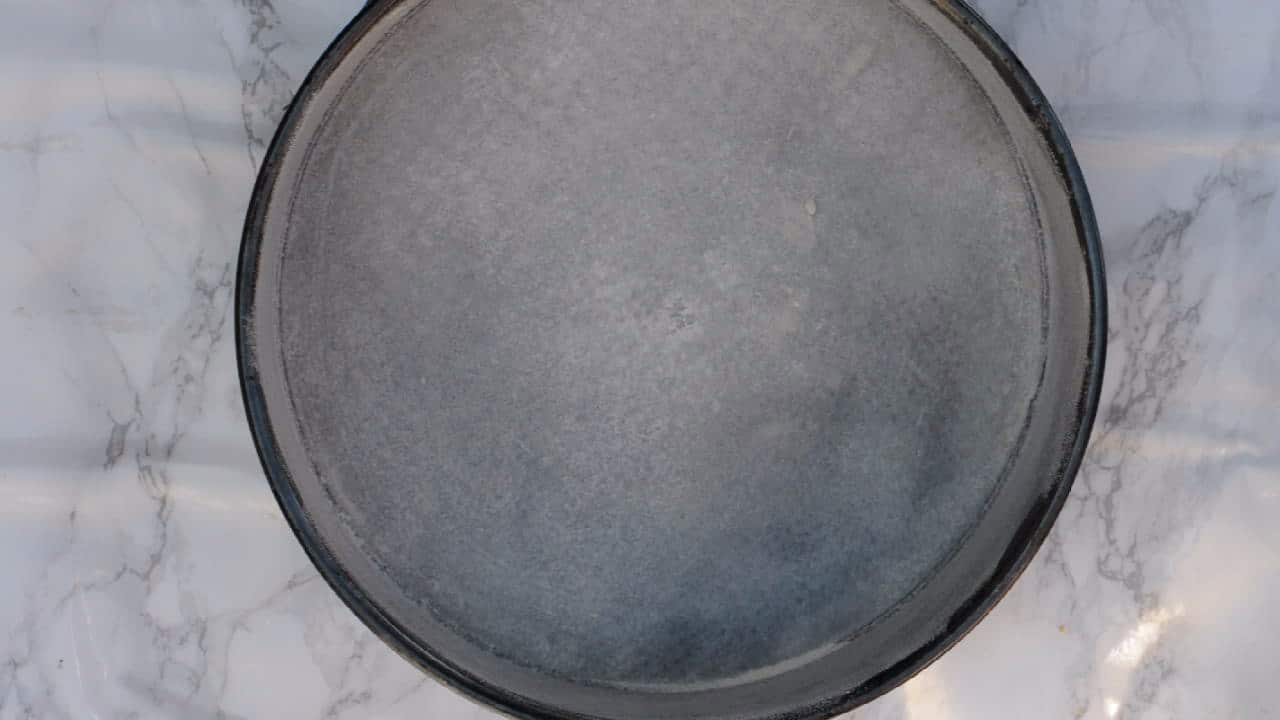
Instructions
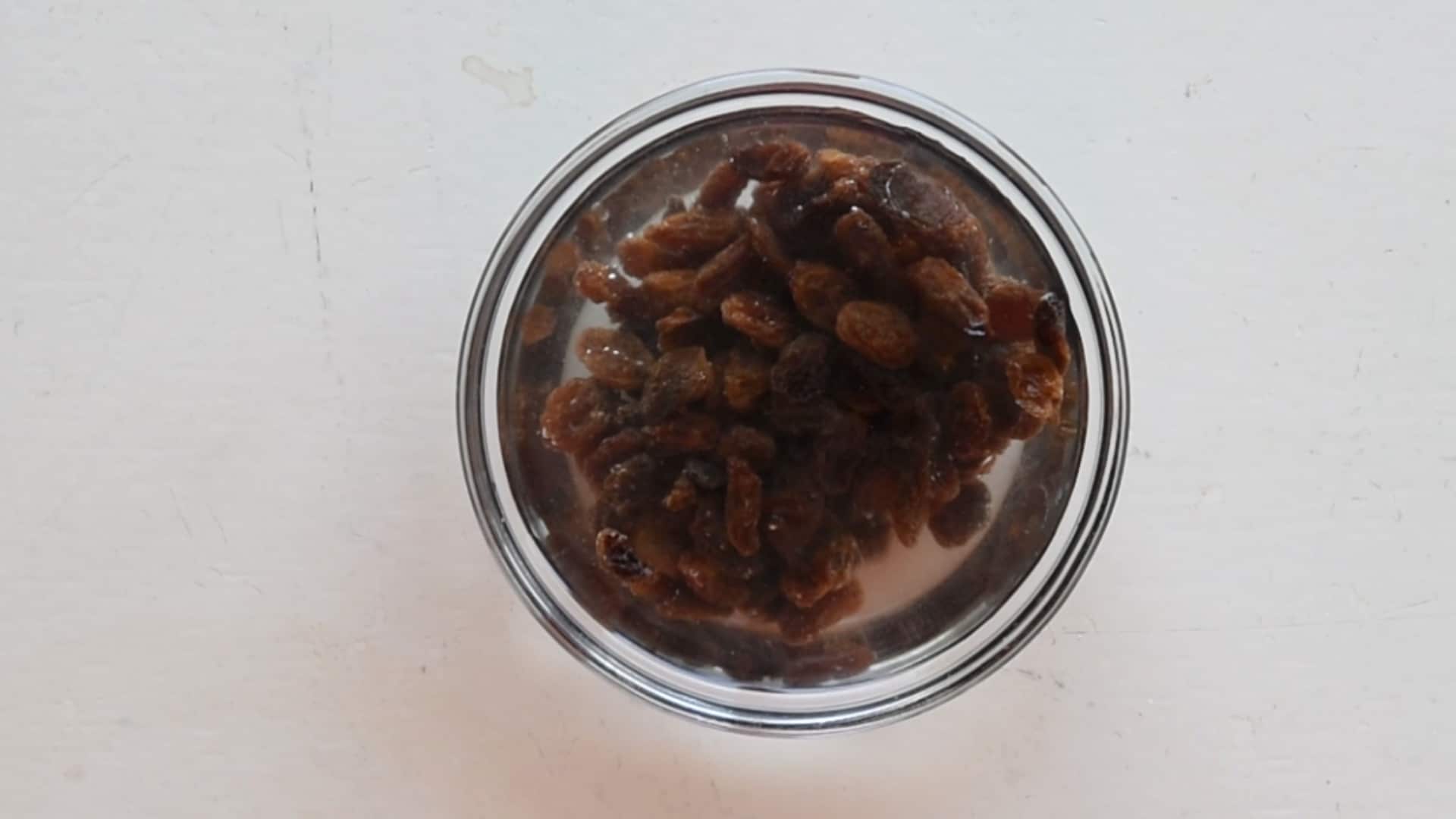
- Begin by soaking raisins in warm water, allowing them to plump up. This step will enhance the flavor and texture of the polenta cake.
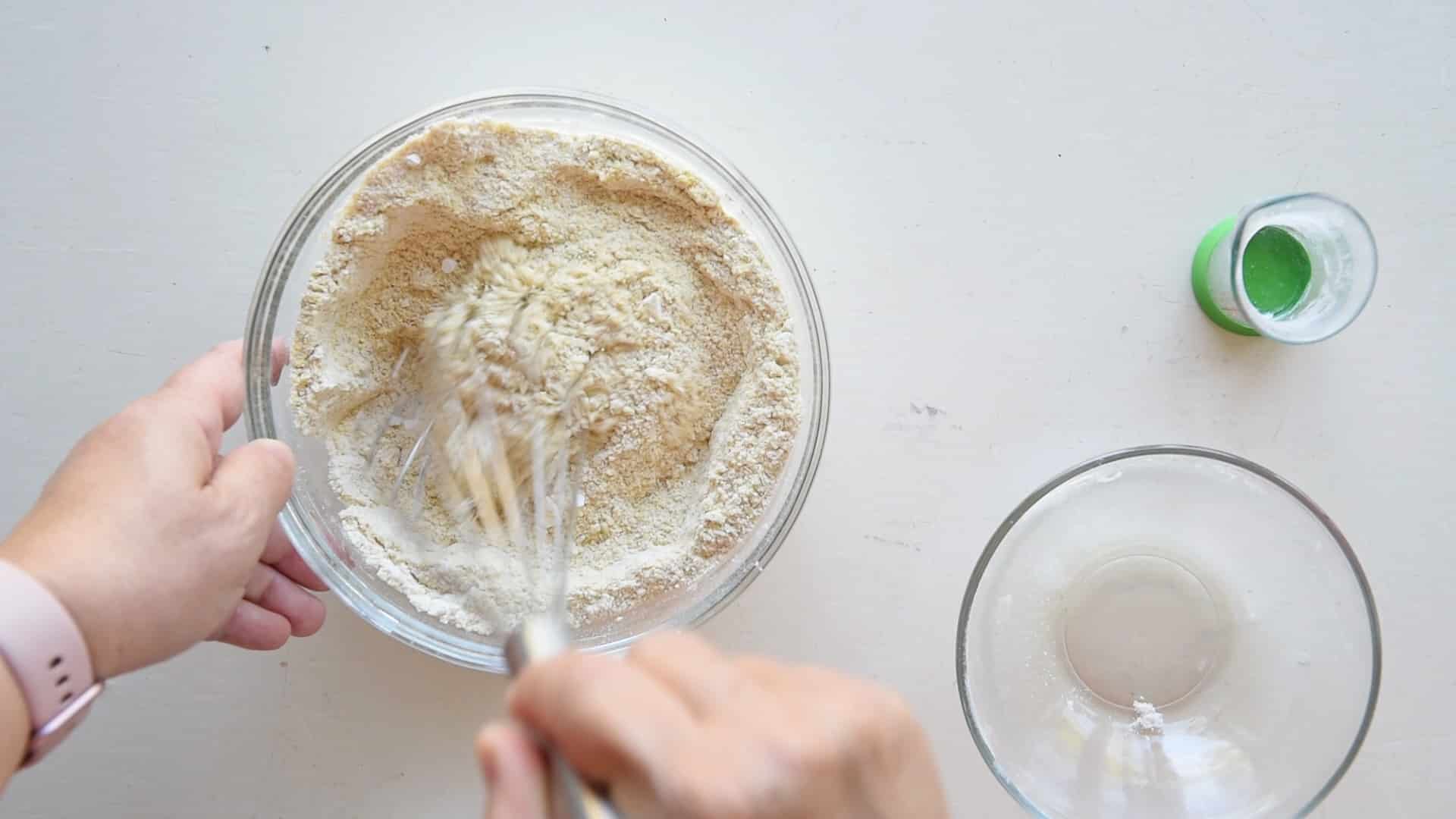
- Combine the polenta, flour, and baking powder in a large mixing bowl. These dry ingredients will serve as the base for the cake.
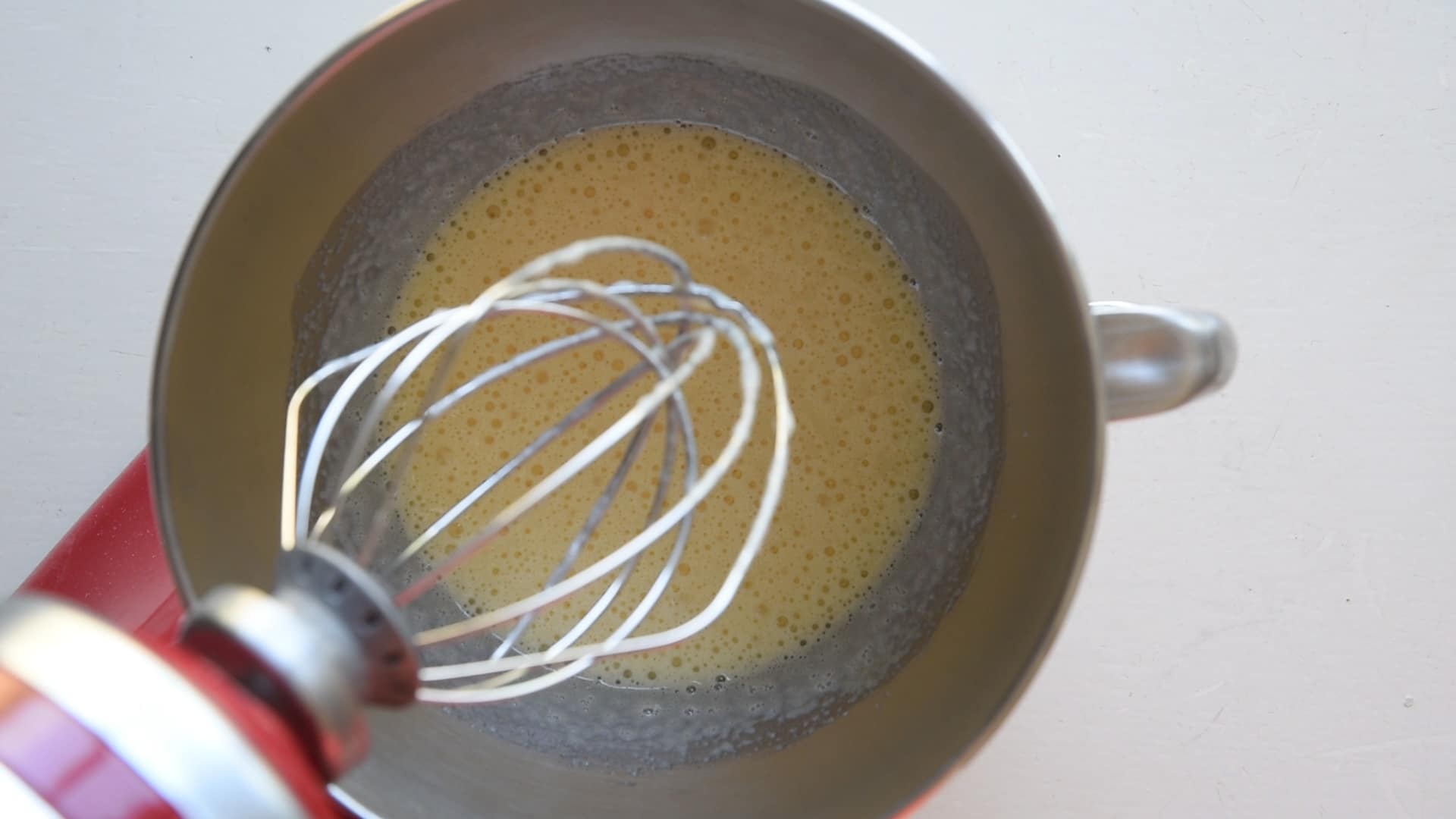
- In a stand mixer with a whisk attachment, whisk together the eggs and sugar until smooth and creamy.
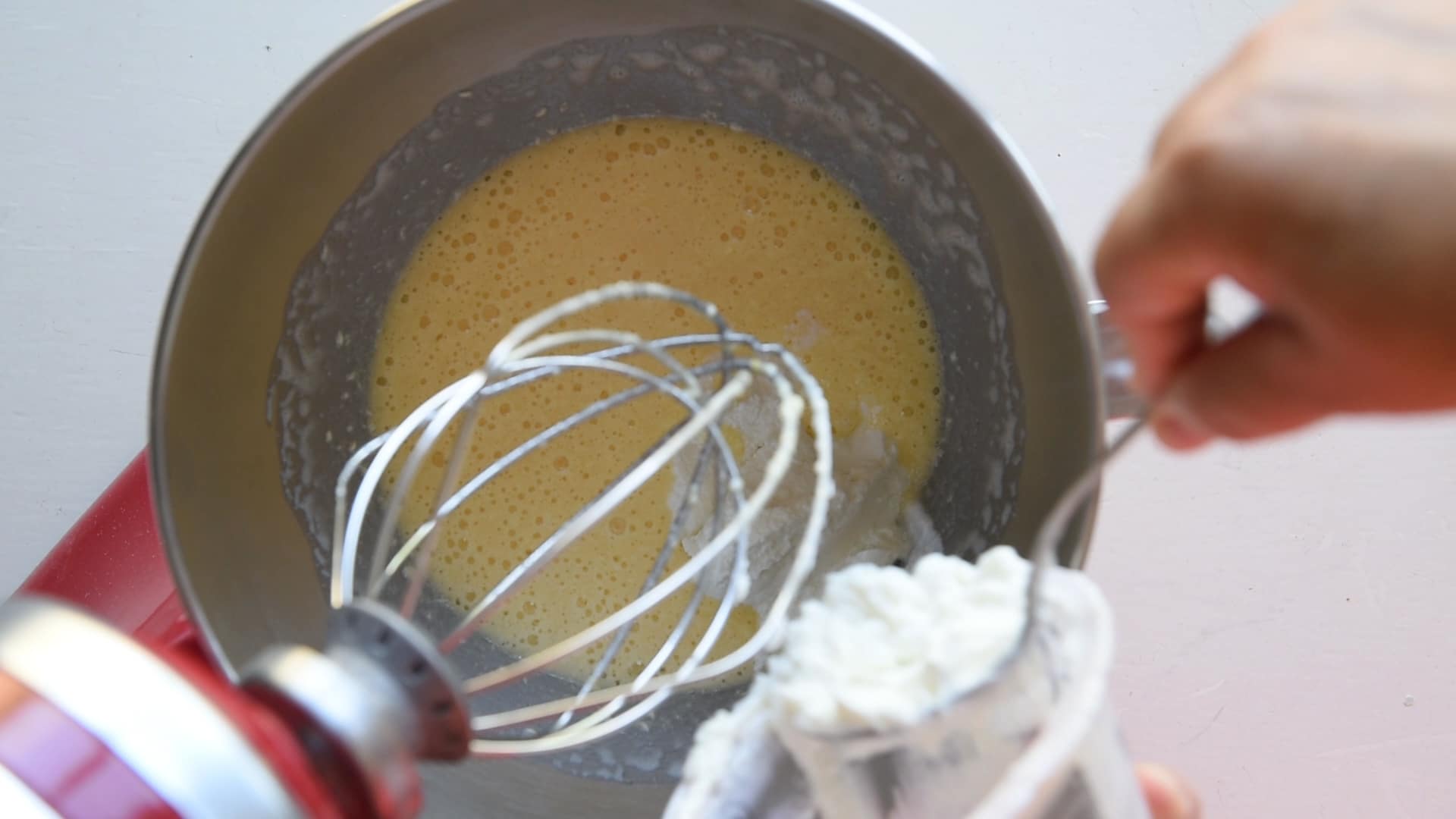
- Gradually add the butter at room temperature and ricotta cheese to the eggs and sugar mixture, ensuring all ingredients are thoroughly combined.
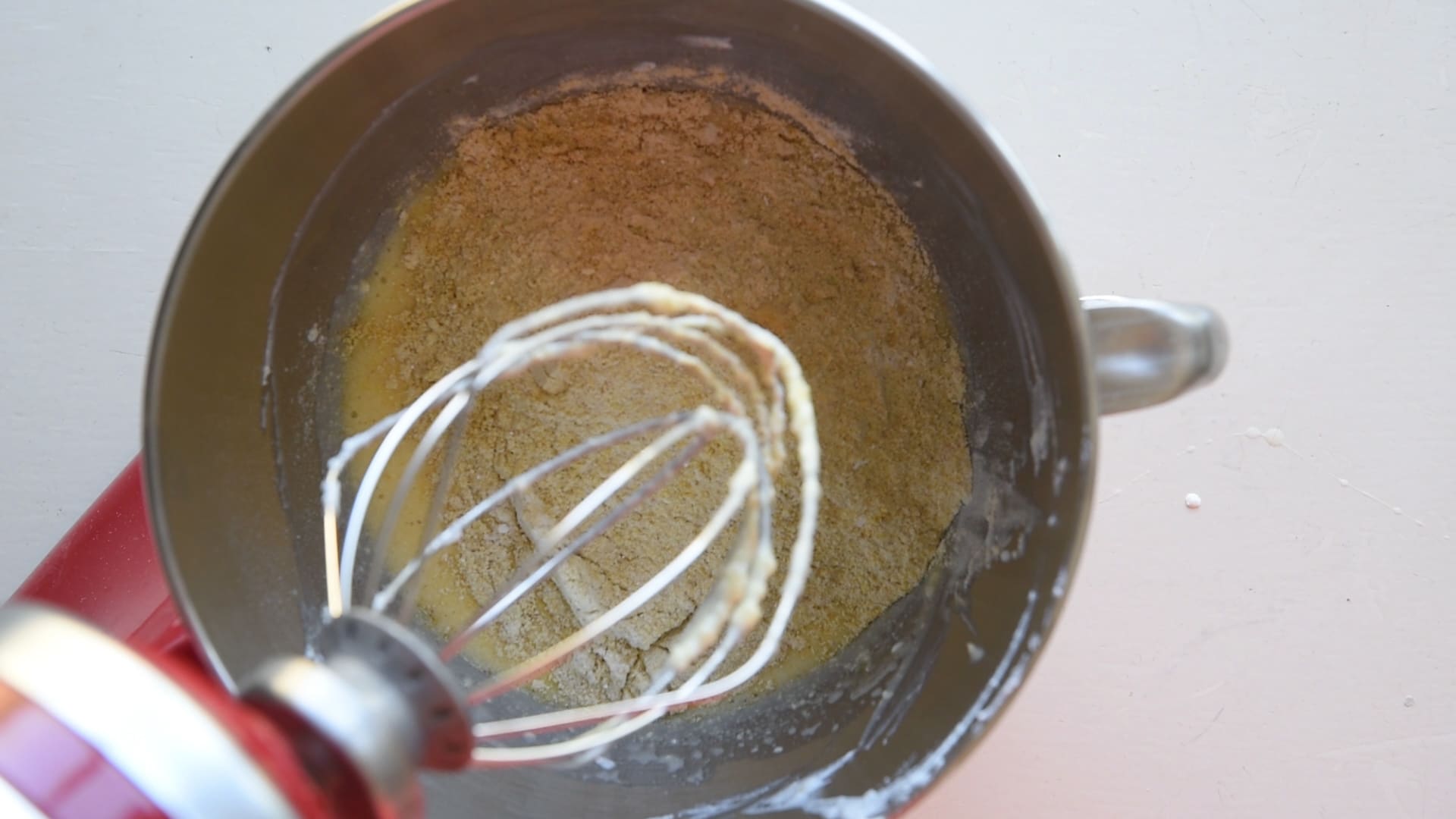
- It's time to combine the dry and wet ingredients. Slowly incorporate the flour mixture into the egg mixture until a smooth batter forms.
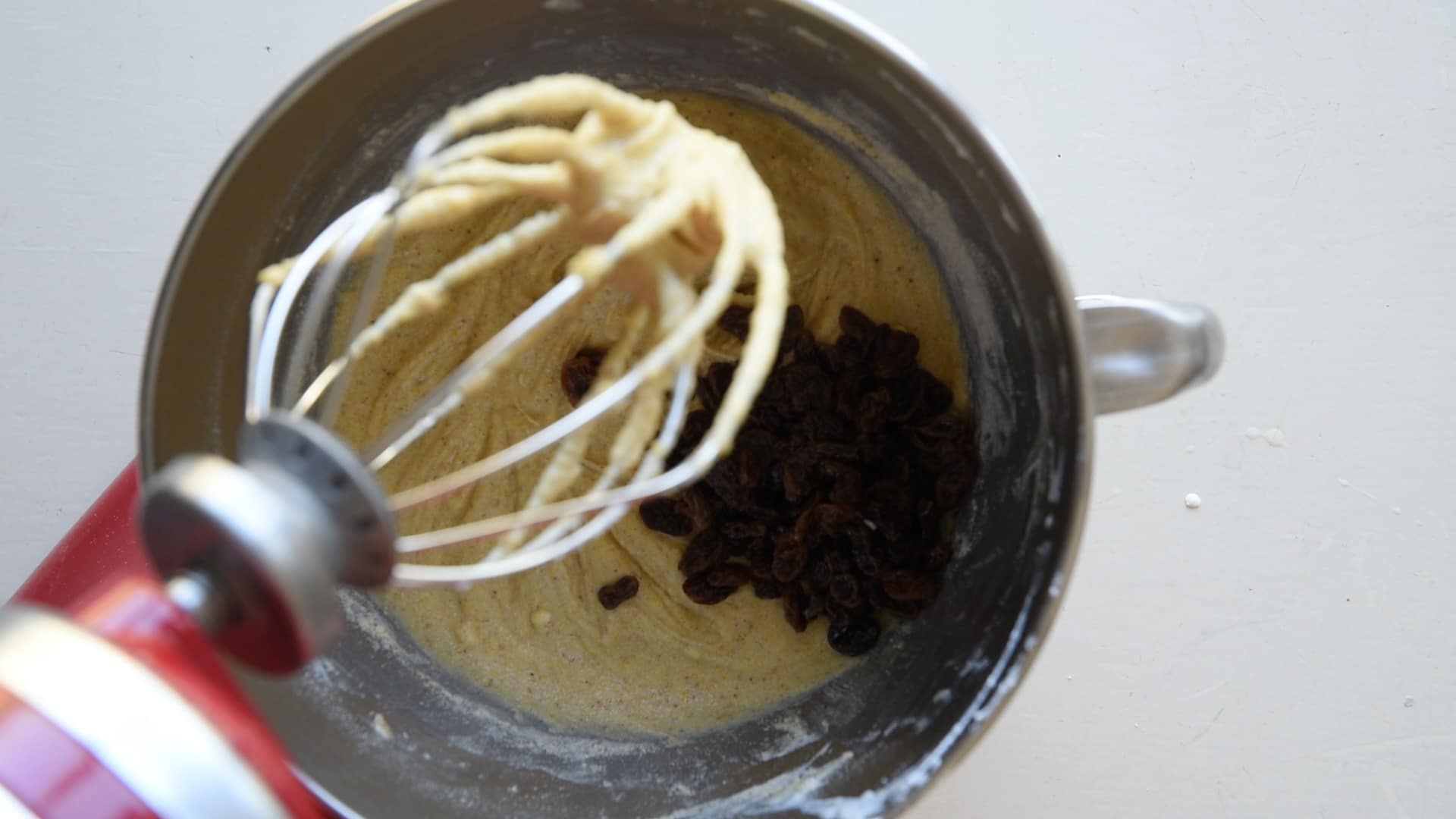
- Once the batter is well-mixed, drain the soaked raisins and fold them into the batter, distributing them evenly.
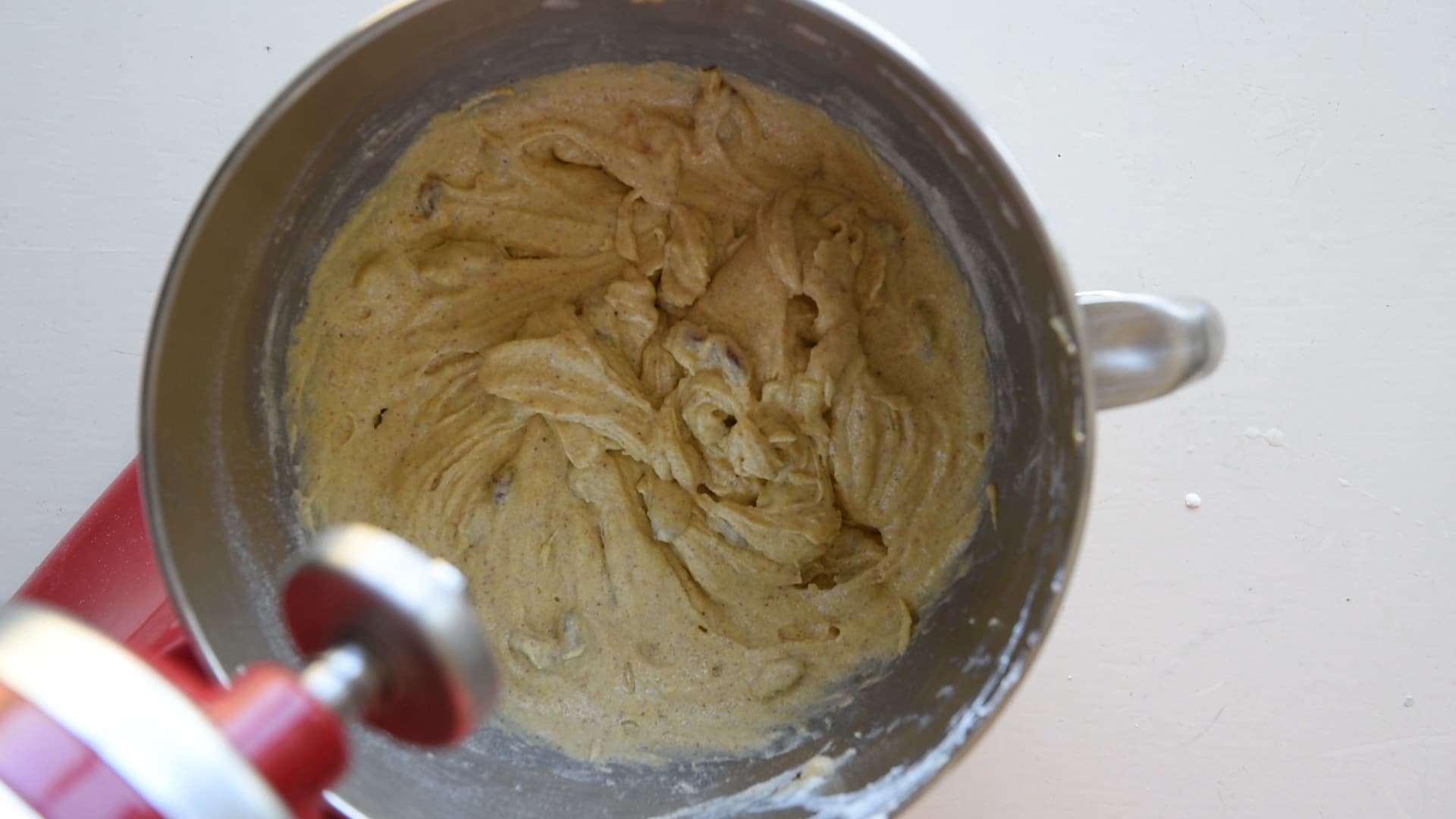
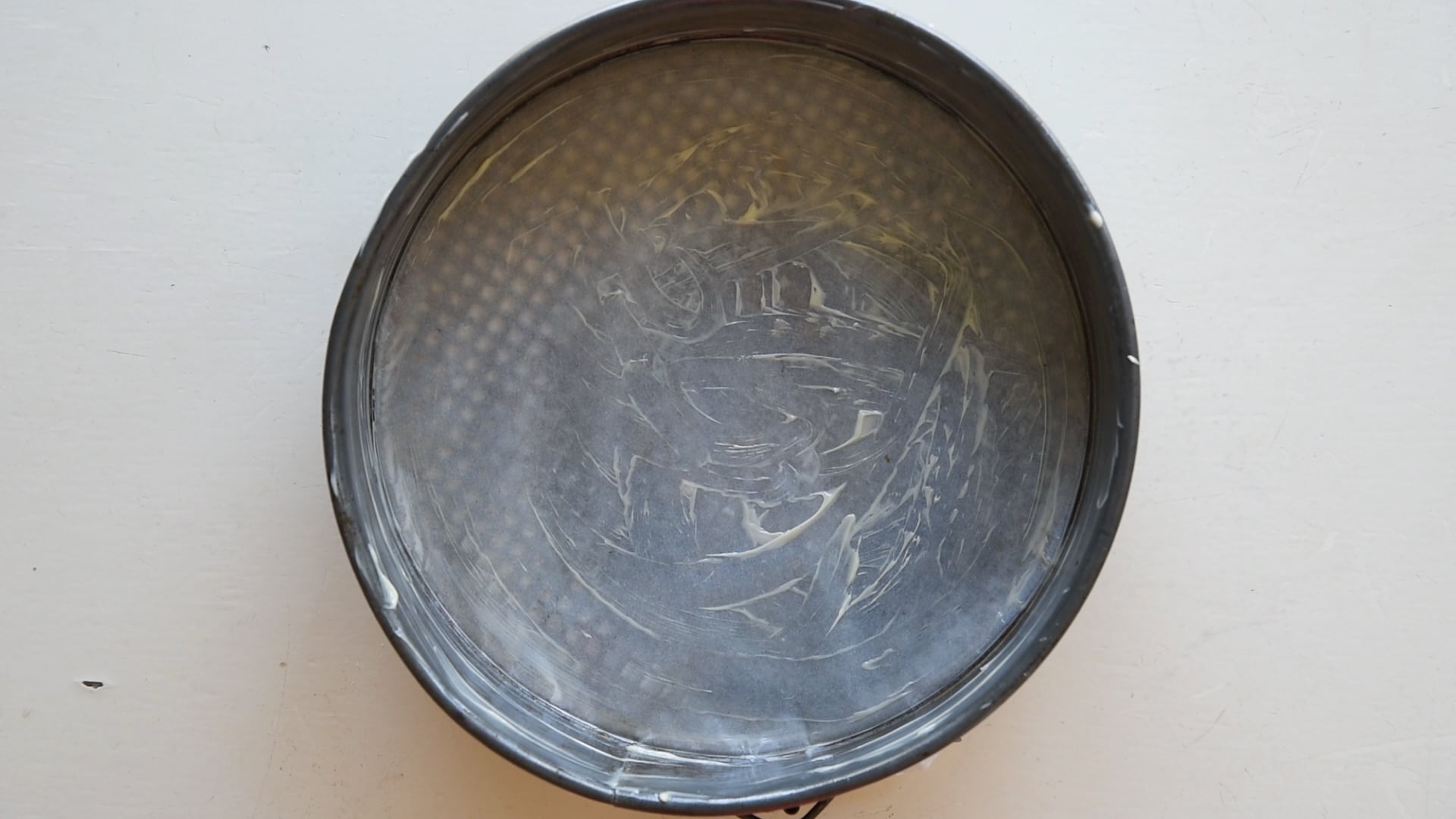
- Prepare your cake pan by greasing and flouring the base and the sides of the tin to prevent sticking.
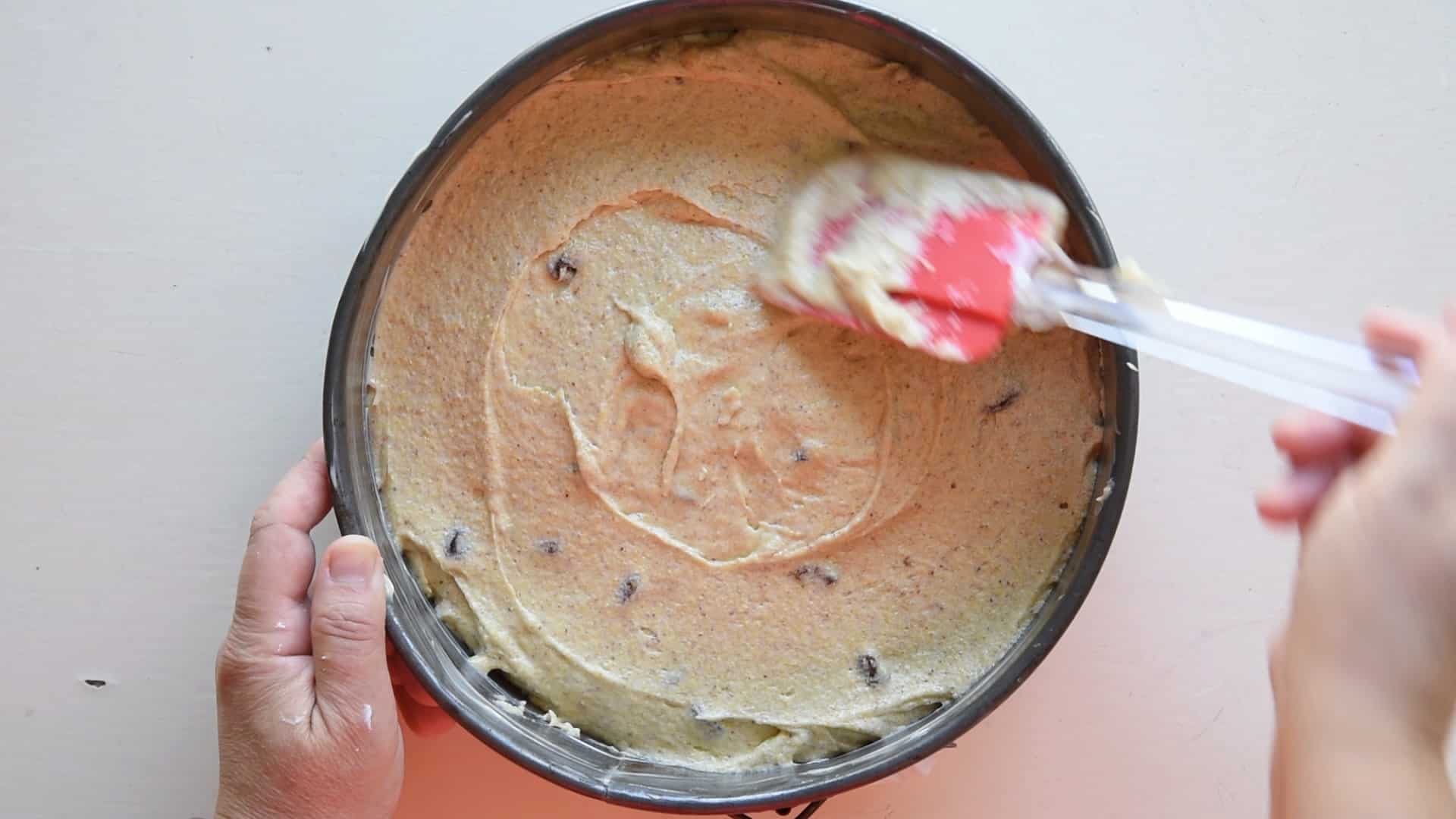
- Pour the polenta cake batter into the prepared tin and level it with a rubber spatula.
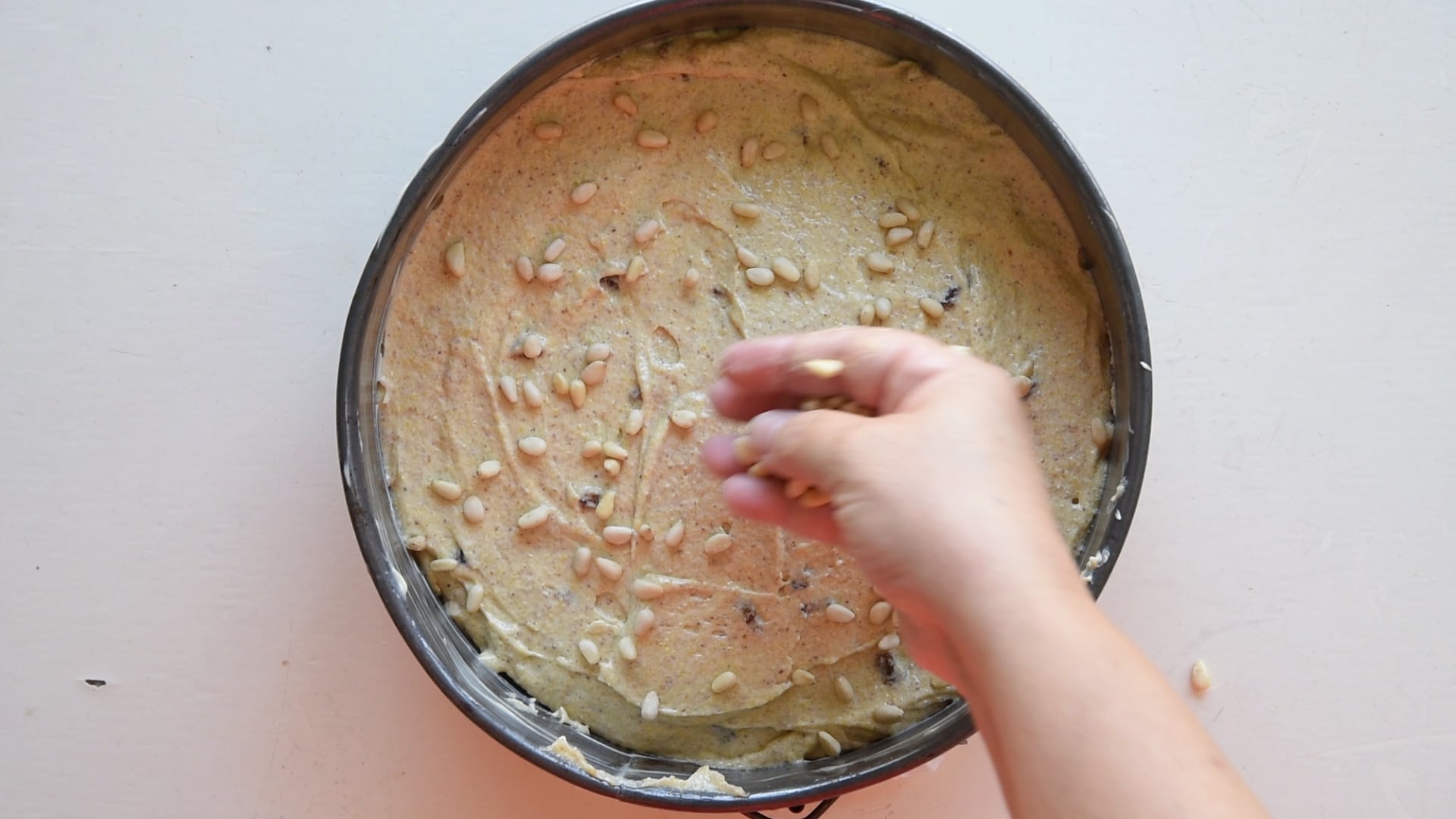
- Sprinkle some pine nuts on top
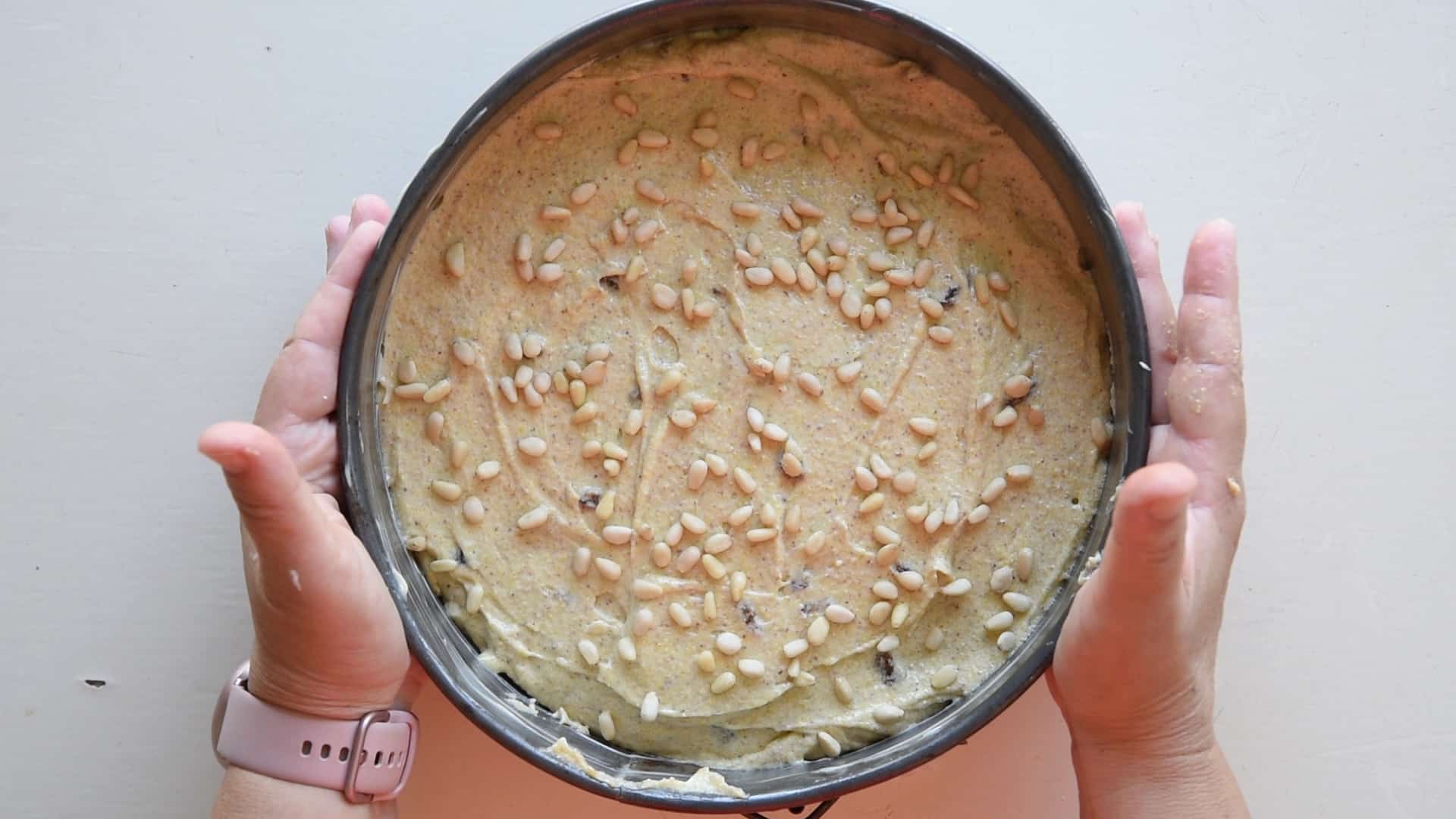
- Place the pan onto the center rack of the preheated oven at 355 F - 180 C.
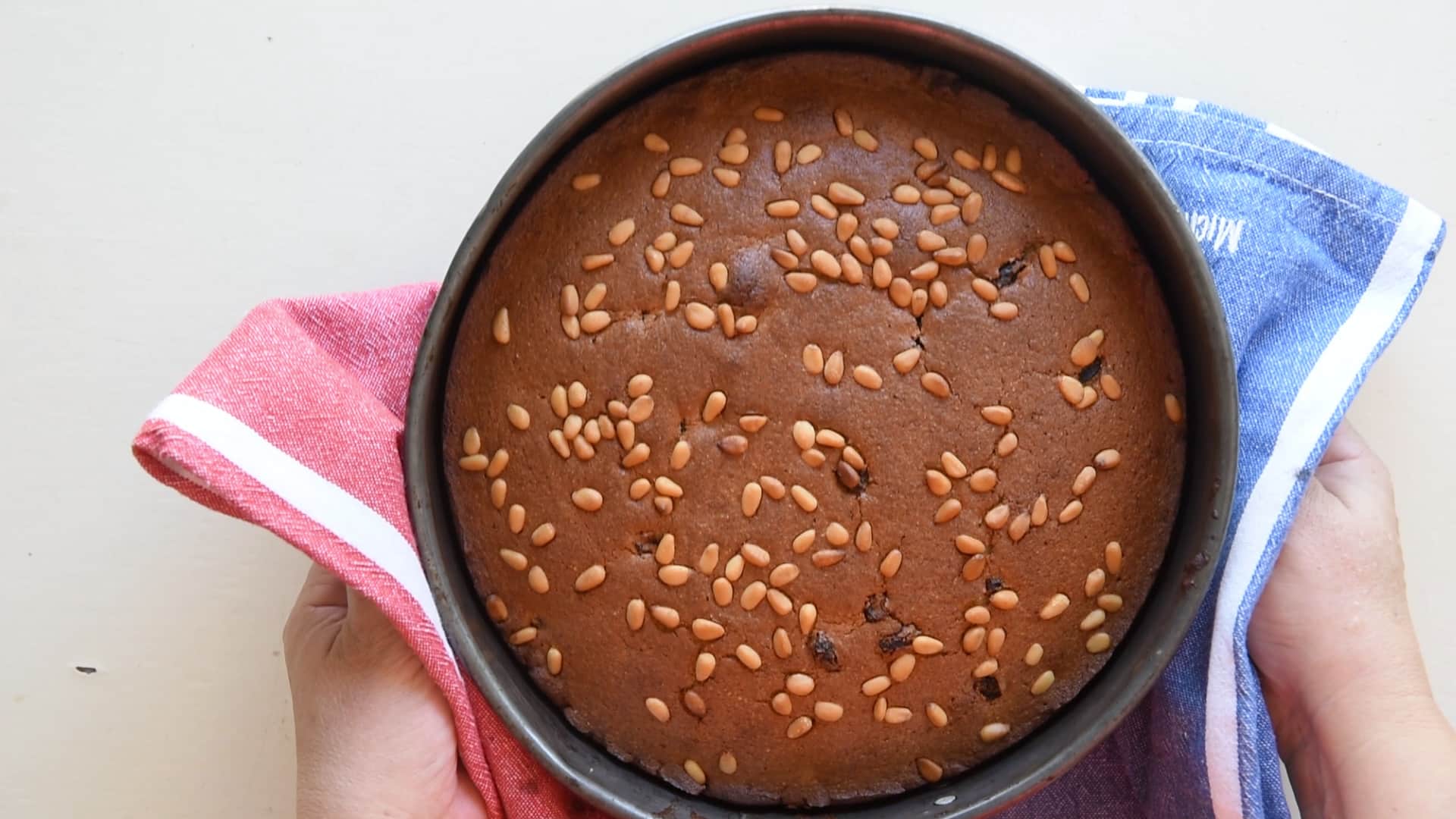
- Bake for 50 minutes until the cake is golden brown and a toothpick inserted into the center comes out clean.
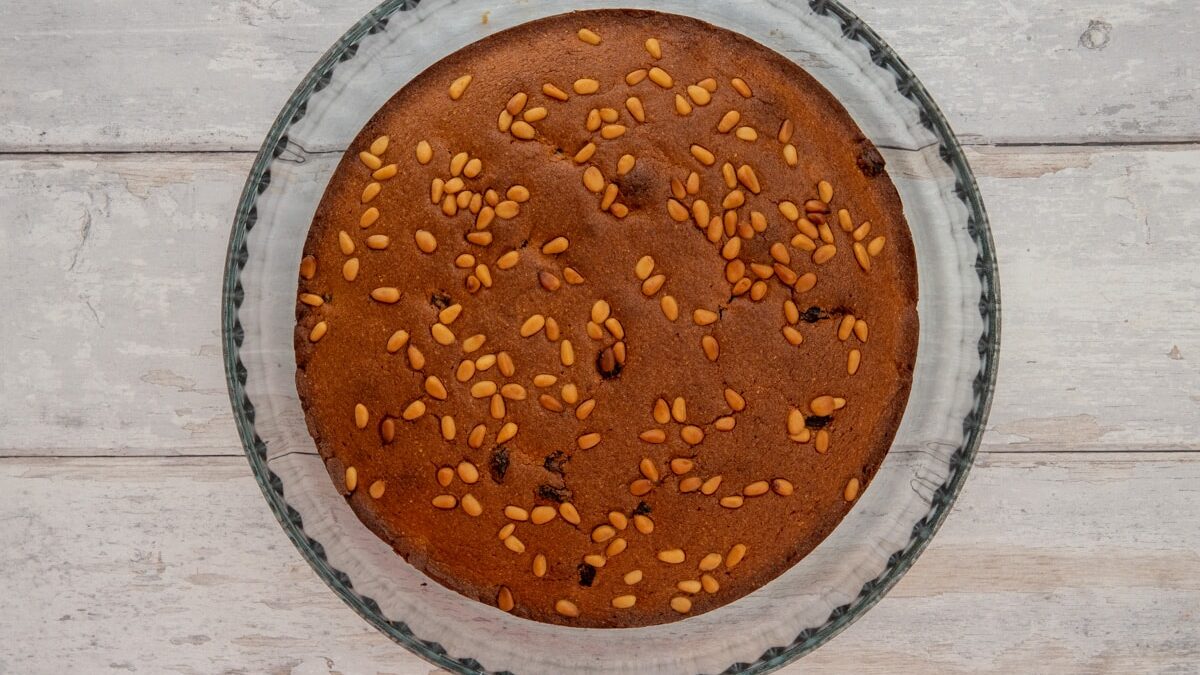
- Remember to allow the polenta cake to cool before serving, giving it the chance to set up and make slicing easier.
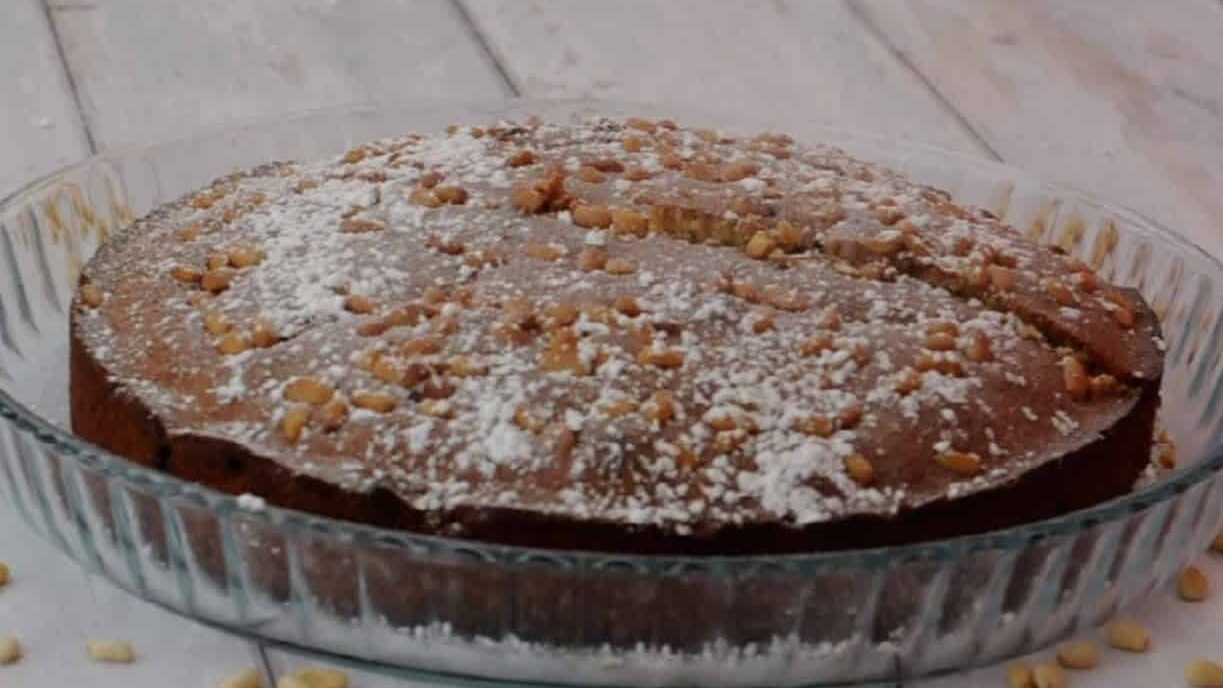
- Serve the cake dusted with icing sugar
Variations
Lending itself to be paired with different flavors, this polenta cake can be enhanced by citrus, such as orange or lemon zest, or even combined with indulgent ingredients like chocolate chips, vanilla essence, or nuts.
You can serve it drizzled with some lemon or orange juice or a touch of orange liqueur to contrast its moist and dense texture.
For a complete after-dinner dessert, you can top it with a lemon glaze or serve it with lemon curd.
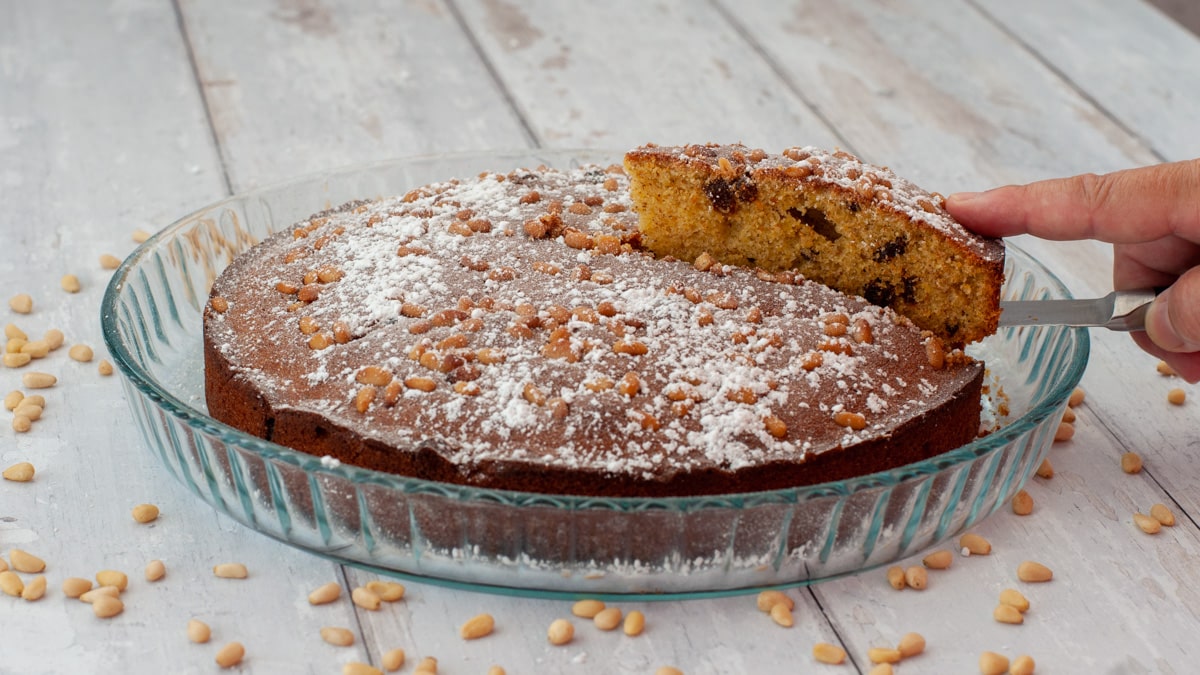
Storing and Freezing
Polenta cake is known for its moist and tender texture, making it a delightful treat for any occasion.
However, proper storage is essential to preserve its quality.
For best results, allow the cake to cool completely before storing.
Once cool, store the polenta cake at room temperature, it is important to keep it properly wrapped to maintain its moist and delicious texture.
For best results, wrap the cooled cake in plastic wrap or airtight container, and store at room temperature for several days.
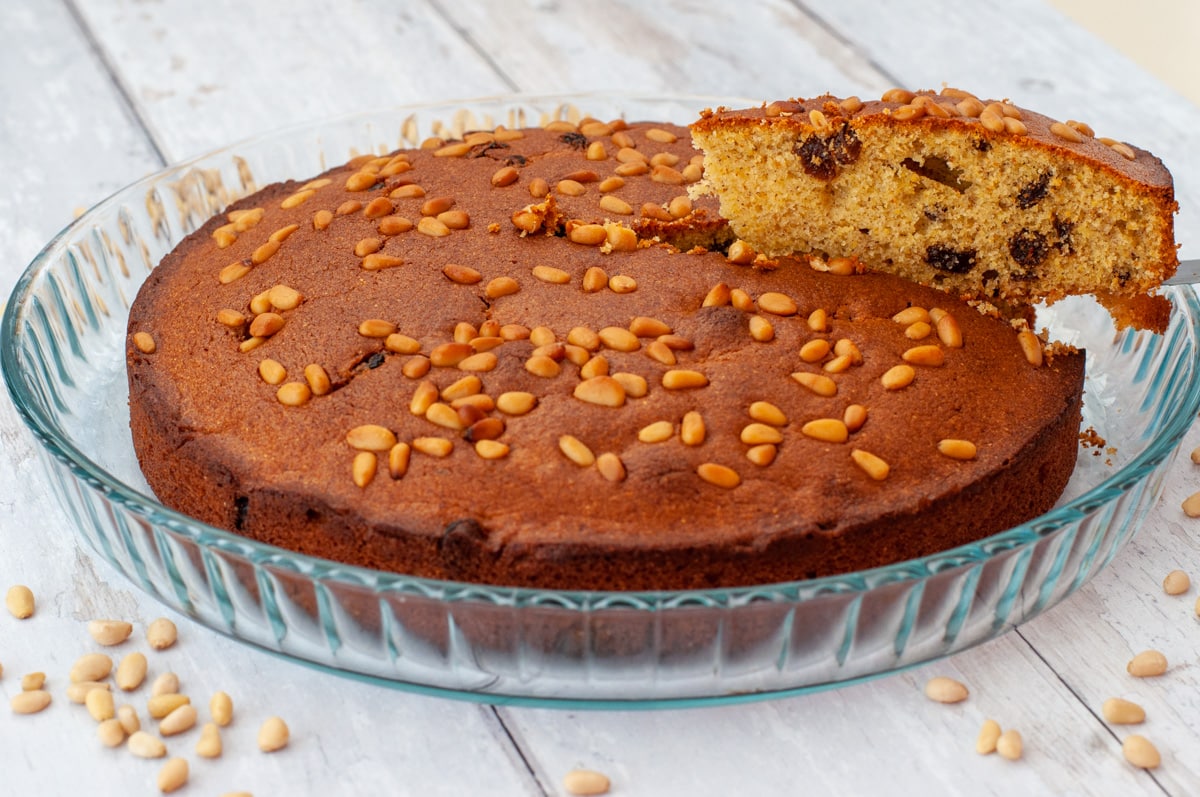
When it comes to freezing polenta cake, the process is simple and straightforward.
Start by allowing the cake to cool completely.
Next, wrap the cake tightly in a double layer of clingfilm or plastic wrap, followed by a layer of aluminum foil.
This step will protect the cake from freezer burn, ensuring that it maintains its taste, texture, and quality for up to three months.
To thaw the frozen polenta cake, first, remove it from the freezer and carefully unwrap the layers of clingfilm and foil.
Place the cake on a wire rack at room temperature and allow it to thaw for about three hours.
Once thawed, the cake is ready to be enjoyed.
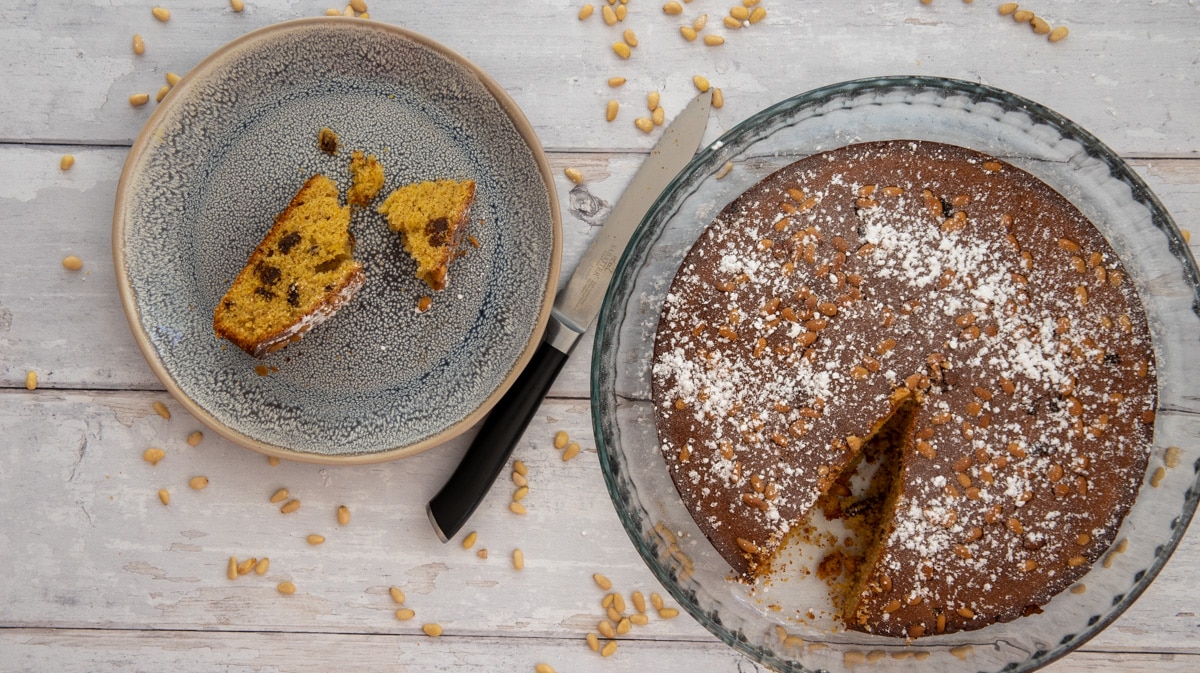
Using other types of Polenta
You can try to make this cake with other types of polenta, adjusting the cooking times and ratio of liquid to polenta accordingly.
The type of polenta you choose will depend on the desired texture and taste of your polenta cake.
The different types of Italian polenta (Polenta Nera, Polenta Gialla, and Polenta Taragna) are variations made from different types of corn and may have unique colors, flavors, and textures.
On the other hand, yellow cornmeal, fine cornmeal, and corn grits are corn-based products with distinct textures and are often used in different culinary applications compared to polenta.
There are several types of Italian polenta:
- Polenta Nera: Polenta Nera, also known as "black polenta," is a traditional Italian variety made from a specific type of corn known as "mais bramata nera." The color of this corn is dark purple, which gives the polenta its characteristic black or dark gray appearance. The flavor of Polenta Nera is slightly nuttier and earthier than other varieties, and it has a coarser texture.
- Polenta Gialla: Polenta Gialla, or "yellow polenta," is the most common and widely known type of polenta. It is made from yellow corn, typically using a variety called "mais bramata gialla." Polenta Gialla has a vibrant yellow color, a smooth texture, and a mild corn flavor. It is a versatile option and can be served in various ways, ranging from creamy polenta to firm consistency.
- Polenta Taragna: Polenta Taragna is a special type of polenta that originates from the Lombardy region of Italy, specifically the Valtellina valley. It is made by mixing cornmeal with buckwheat flour. The buckwheat flour gives the polenta a darker color and a distinct nutty flavor. Polenta Taragna has a unique texture, a slightly grainier feel compared to regular polenta, and a rich, earthy taste.
- Instant Polenta: Instant polenta is a convenience product designed to save cooking time. It is precooked and then dehydrated, so it can be quickly reconstituted by adding boiling water or milk. Instant polenta is a finer grind compared to traditional polenta, and it tends to have a smoother texture. However, some purists argue that the taste and texture of instant polenta might not be as authentic as the traditional versions.
Now, let's differentiate these types of polenta from the other corn-based products:
- Yellow Cornmeal: Yellow cornmeal is a coarse flour made from yellow corn kernels. It is the primary ingredient used to make polenta. The main difference between yellow cornmeal and polenta lies in their intended use. While coarse cornmeal can be used for various dishes, polenta is specifically prepared as a dish by cooking the cornmeal with water or broth.
- Fine Cornmeal: Fine cornmeal is similar to yellow cornmeal but has a finer texture. This corn flour is often used in baking to make cornbread, muffins, or other corn-based baked goods. The finer grind results in a smoother texture in baked goods compared to coarser cornmeal.
- Corn Grits: Corn grits are made from dried, ground corn kernels. They have a coarser texture compared to both yellow cornmeal and fine cornmeal. Grits are a traditional Southern U.S. dish, commonly served as a breakfast side dish or as a base for savory dishes. They are cooked with water or milk to achieve a creamy consistency of cornmeal porridge.
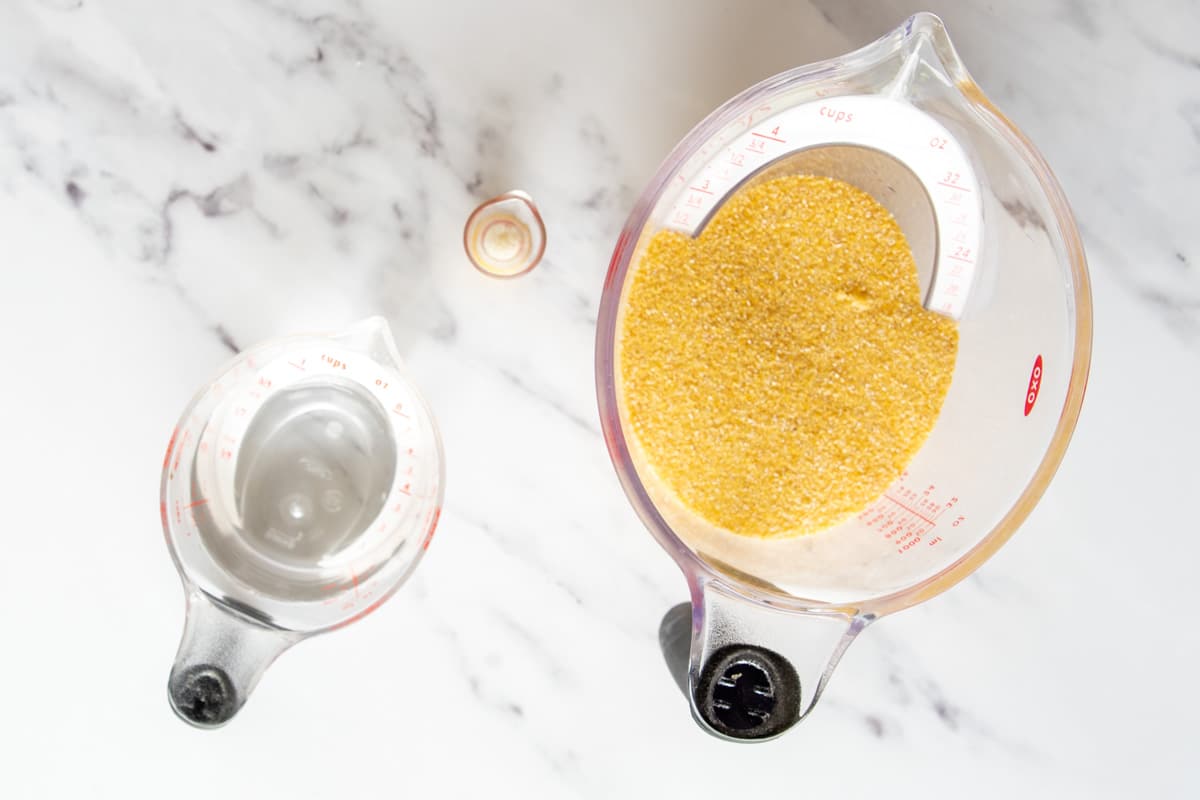
For more recipes served with polenta
If you are making any of this polenta cake with ricotta and pine nuts, leave your comment below I would like to hear from you. You can find more delicious ideas if you FOLLOW ME on Facebook, YouTube, or sign up to my newsletter.
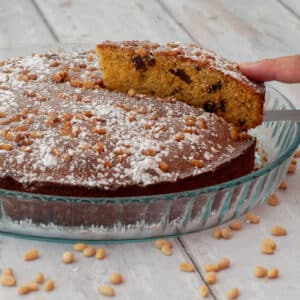
📋Sweet Italian Polenta Cake Recipe With Ricotta
Ingredients
- 1 cup Polenta
- ¾ cup Flour 00
- ¾ cup sugar
- 7 oz ricotta
- ⅓ cup butter at room temperature
- 3 egg
- 2 tablespoon Baking powder
- ⅓ cup raisin
- 1 tablespoon pine nuts
Instructions
Preparing the batter
- Begin by soaking raisins in warm water, allowing them to plump up. This step will enhance the flavor and texture of the polenta cake.⅓ cup raisin
- Combine the polenta, flour, and baking powder in a large mixing bowl. These dry ingredients will serve as the base for the cake.1 cup Polenta, ¾ cup Flour 00, 2 tablespoon Baking powder
- In a stand mixer with a whisk attachment, whisk together the eggs and sugar until smooth and creamy.¾ cup sugar, 3 egg
- Gradually add the butter at room temperature and ricotta cheese to the eggs and sugar mixture, ensuring all ingredients are thoroughly combined.7 oz ricotta, ⅓ cup butter
- It's time to combine the dry and wet ingredients. Slowly incorporate the flour mixture into the egg mixture until a smooth batter forms.
- Once the batter is well-mixed, drain the soaked raisins and fold them into the batter, distributing them evenly.
Baking it
- Prepare your cake pan by greasing and flouring the base and the sides of the tin to prevent sticking.
- Pour the polenta cake batter into the prepared tin and level it with a rubber spatula.
- Sprinkle some pine nuts on top1 tablespoon pine nuts
- Place the pan onto the center rack of the preheated oven at 355 F - 180 C.
- Bake for 50 minutes until the cake is golden brown and a toothpick inserted into the center comes out clean.
- Remember to allow the polenta cake to cool before serving, giving it the chance to set up and make slicing easier.
- Serve the cake dusted with icing sugar
Video
Notes
Storing
For best results, allow the cake to cool completely before storing. Once cool, store the polenta cake at room temperature, it is important to keep it properly wrapped to maintain its moist and delicious texture. For best results, wrap the cooled cake in plastic wrap or airtight container, and store at room temperature for several days.Nutrition
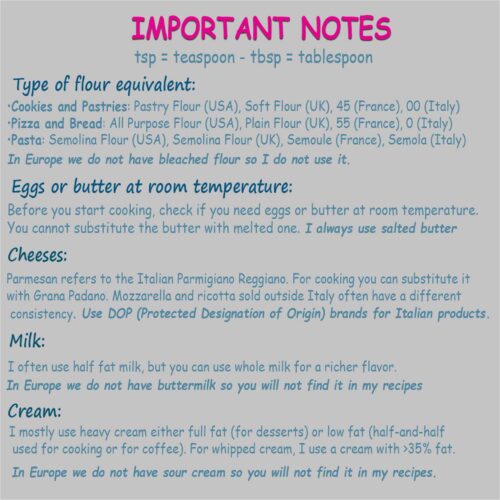

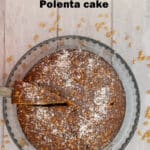
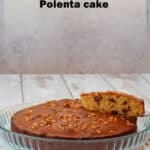
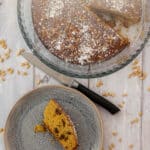
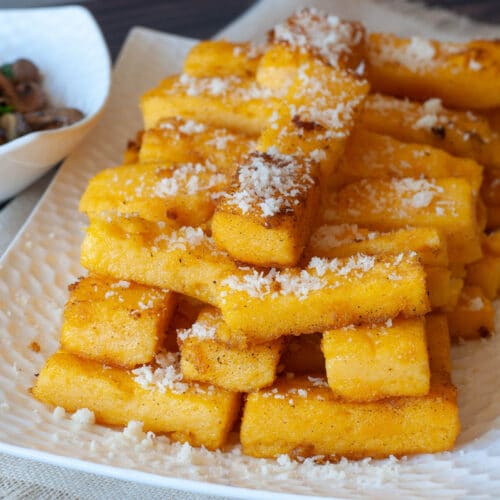
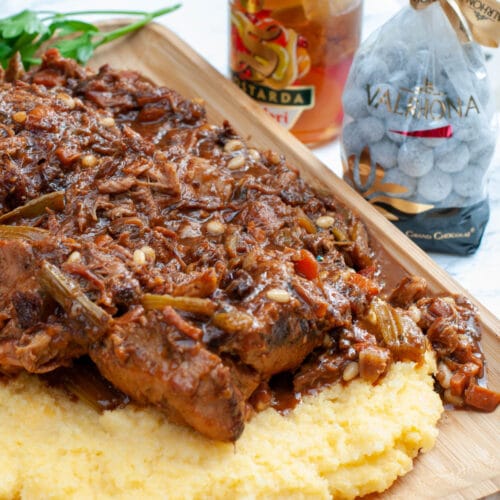
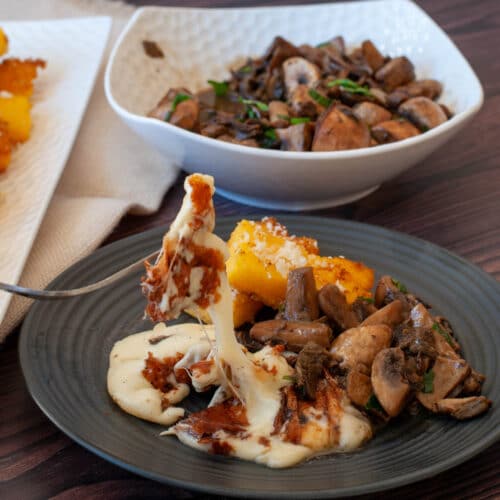
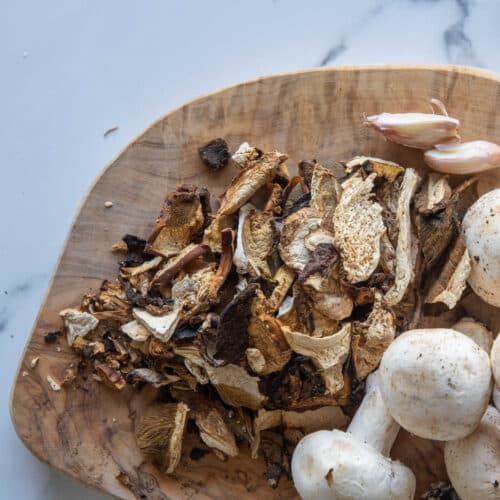

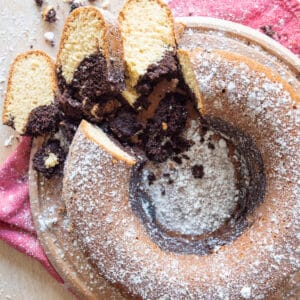
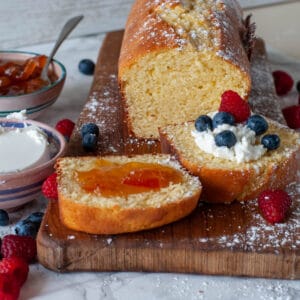
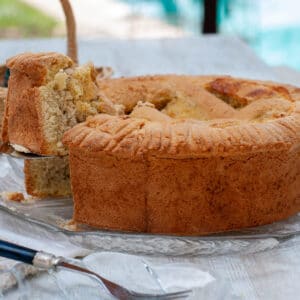
livia alessandra spinolo
il looks really tasty and easy to make I will try it!
Laura
Thank you for the comment. The kids loved it